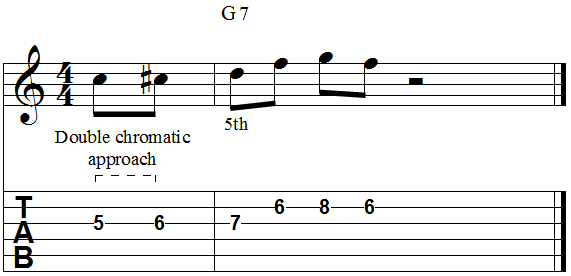

The movement of chords from one degree of the scale to another produces a chord progression. There are eight degrees in every key whether major or minor and each degree of the scale has its unique chord (aka scale degree chords). The C major seventh chord: and the C dominant seventh chord: share the same root note C (which is the first tone of the scale): however, the C dominant seventh chord: is a chromatic chord because it consists. These alterations are best saved for FINAL cadences.Īnswer the questions on the worksheet to help you analyse these examples. The 2-5-1 Chord Progression Using The Chromatic Supertonic Chord And The Pre-dominant Chord. any chord that consists of one or more notes that are foreign to the key of C major, such a chord is a chromatic chord. An alternative approach chord to IIb in this situation is Ib, but be careful of this formula in minor keys (it creates awkward intervals). You should only use chromatic chords if you are already producing work at a high level and with only very few mistakes. melody notes that fall on the strong beats should be chord tones and the notes.
#Chromatic chords how to
Have a look at the examples below and see if you can incorporate these ideas into worksheets you have already completed. Learn how to use chromatic approach notes in a jazz guitar minor ii V i. Nonetheless, in reading through the studies, I repeatedly conclude that the voices of practitioners need to be included to a greater degree.Tom Pankhurst's ChoraleGUIDE - Bach fingerprints: chromatic chords (10)īach uses a range of chromatic chords in his chorale harmonisations, but the easiest to emulate are the Tierce de picardie and chord II with a sharpened third. A half step on your dulcimer is the interval between two narrow gap frets, the 2 and the 3 frets, for example. Trying to find information about this technique seems to be difficult as it mostly seems delegated to Jazz making it somewhat obscure. Generally speaking it follows a progression of Bb/Bsus4, F/Fsus4, Ab/Fm, Cm/Csus4 and the notes within those chords to make it chromatic are Bb, A, Ab, G.
#Chromatic chords full
This is the fifth note in a major scale above the root, or a total of three full steps and a half step above the root. So I picked it a part and analyzed the chords. For instance, and although not with the same premise as modal interchange, we can borrow chords from other musical relationships that can be made with the tonic, like the chromatic mediants relationship. The G chromatic scale has 12 notes, and uses every half-tone / semitone position. The third note in the triad is a perfect fifth above the root. The tools and techniques to create chromatic harmony do not exhaust here. In addition, using the well-honed categories aids in bracketing themes such as metaphor, interpretation, subjectivity, language and history. This step shows the ascending G chromatic scale, going from the lowest to the highest note in the scale. Clearly this approach fits nicely with philosophically defined concepts such as meaning, emotion, and other elusive modes. This methodology is not only removed from the nuts and bolts of art, it is also easily manipulated in discourse on art due to the ease with which we can fit aspects of art (e.g., aesthetics) into the philosophical framework. In consciousness studies, for example, we have a field that relies heavily on scientific research and humanistic methodologies when building the philosophical models scholars use to structure theories. Establishing areas of commonality across a range of disciplines must somehow accommodate the ways in which each has developed a research agenda that seems to serve its core needs. Over time I concluded that developing an interdisciplinary approach offered the best option for expanding views, although it is not an easy task. Generally, it seemed that the dominant framework trivialized what I considered the most important aspects of the creative process. My early research was motivated by a desire to discover the historical circumstances that led to the difficulty in fitting visual art (as I knew it in my studio) into the discussions I encountered.

By adding a C tone between a C and a D chord, we.

Less obvious is my experience in general. Playing chromatic means that we are going one halftone in some direction, for example: C - C - D - D - E. The obvious one is that I have a deeply felt personal relationship with the subject matter.

As an artist I admittedly scrutinize all of the theories related to the arts closely.


 0 kommentar(er)
0 kommentar(er)
